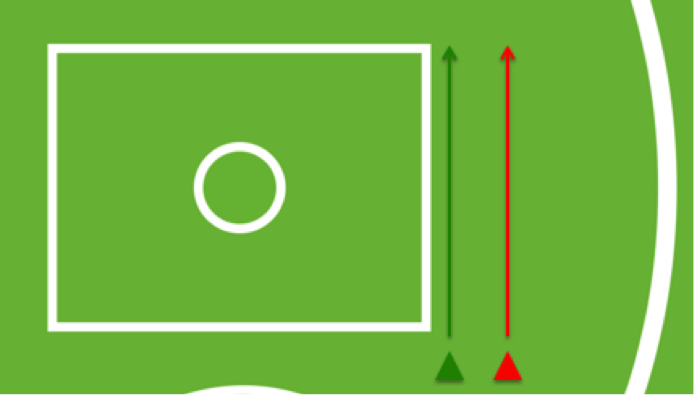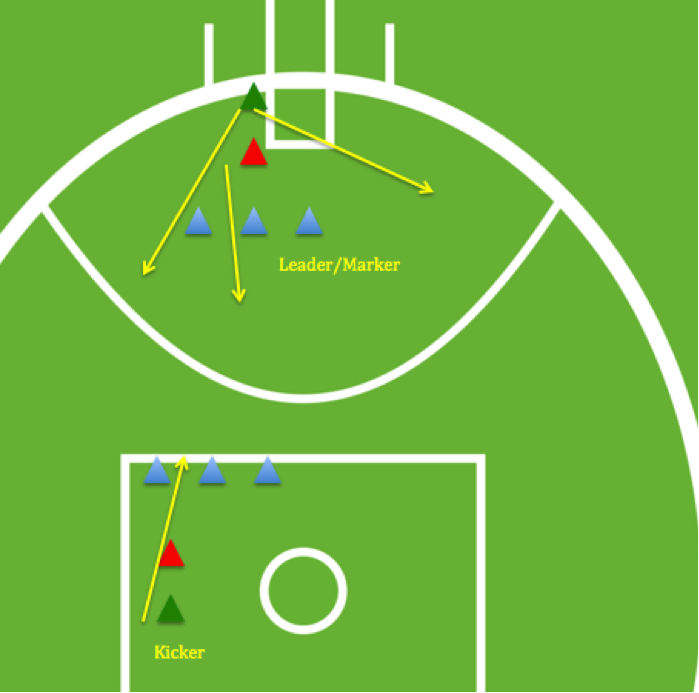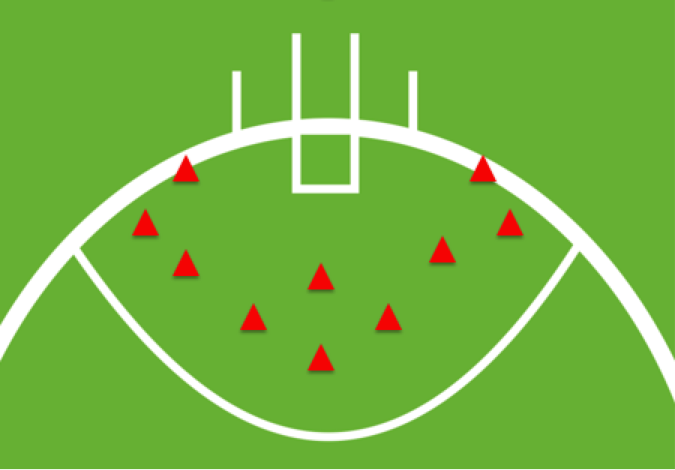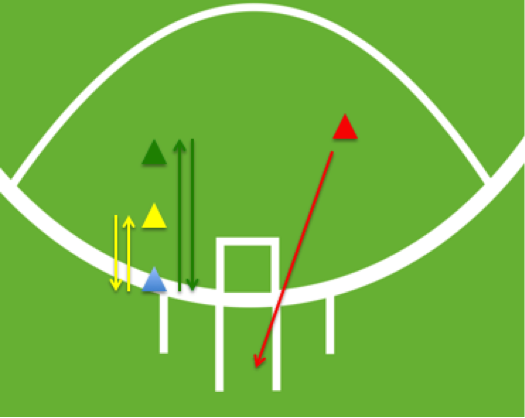Small Group Informal Football Training
Cancelled seasons are very disappointing, and for many the motivation to train at all disappears all together. Understandable.
For plenty who still intend to continue to focus on physical development in their own time, motivation will still be hard to maintain for many.
One option that does exist (in some cases, unless you face complete bans on anything what-so-ever) is maintaining a degree of football-style-training-based fitness, performed within that small training group setting.
This is nothing too different to having a ‘gym-buddy’ who you meet a couple nights a week after work to bench, squat, pull up (but mostly bench) and banter with consistently, when otherwise it would be harder to maintain the motivation to do so – especially through the cooler months.
Motivation, accountability, enjoyment, the social engagement and also the quality of the training being performed are all benefits gained from teaming up with a friend or 3, that are harder to replicate on your own.
Naturally the mentality that many players have fallen into (and in some ways it is almost inevitable or forced as the restrictions are just so all-consuming) is to ‘wait until next season now.’ The problem with putting the cue in the rack entirely is that there is absolutely no guarantee at all that anything will be any different 12 months from now.
(Here in Adelaide the mood is certainly very positive, with many seaons being played, most shops open, crowds and things, however this is luck of the draw, things can turn quickly here too, and it is naïve to think otherwise.)
Without getting too philosophical, the point I am making is that there is absolutely no guarantee that the conditions we are operating in (purely talking from a sports participation here guys and girls) will be any different at all 12 months from here. They may improve then get worse then improve and get worse and we are still facing another season with no footy or very limited and interrupted and cancelled seasons again.
So how do we approach it in the mean time? ‘Just wait until next year’ may not be the best idea. Play the cards as they lie, and do the most that you can personally right now – and aim for those little bits of enjoyment in what limited capacity within participation that you can.
In this discussion it almost becomes less about physical preparation or ‘fitness’ and ‘performance’ and every bit about a degree of informal personal participation within the game, while there are no formal channels – and once again, may not necessarily be for a second season.
Getting a little side-tracked here, but this is an important point. So how could this look?
3 important things to ensure first
1.Make a commitment to each other, and stick to it – no ‘maybe, when I feel like it, but if I don’t feel like it I will bail’
2.Join in the overall planning together
3.Find a way to also add in some competition/record-keeping
One more thing - most importantly of all – simplicity is genius. Training sessions don’t need to follow some sort of periodised plan or mapped in real intricate detail. Rather, rough and general layouts, and see how it evolves, based on how you are going (and participants are tracking) from week to week.
As covered in a previous discussion on small-group club training (when the season was looking to still be a chance a couple months back), sessions need not be longer than an hour, as with the smaller numbers, you will fly through the work.
A rough session structure composed of a warm up, and 5-6 x 8-10-minute blocks is a good baseline structure to work off of.
In terms of what exactly these blocks can involve, we will run through a few examples now.
2 People
2-players sessions will not be too dissimilar to what a 1-person session would look like, yet aside from the added motivation and accountability, there are still a couple extra key elements that having at least that 1-other person out for football sessions can do.
Session 1
1.Standard Lane drilling;
-Ground half-volley collects 2 x 5-10 per player
-Marks in hands 2 x 10
-Kicks 10 each @ 20 meters, 10 each at 30 meters
-Quick hands (2 balls)
2.Speed drill – competitive
-Repeat 40-meter sprints (1 end of the square to the other).
-20-second recovery (would be longer if maximum all out speed was the goal, but repeat speed here)
-Repeat for 5-6 repetitions.

3.Kick to lead drill, acceleration and steady and deliver 
-1 player at each end on the green cone
-Ball set up on the red cone 5-10 meters ahead of green marker
-1-3 markers set up 15-20 meters ahead of the ball
1.Kicker accelerates from green cone to collect footy at red cone
2.Kicker accelerates with the ball and delivers to leading target
3.Ball MUST be released prior to reaching the blue cones (that is why they are there, to apply time pressure)
4.The leading player can lead whenever they like, and wherever they like (the cones are set up the way they are at that end so that players can reverse roles straight away without swapping positions.)
This simple drill will also serve to practice timing of leading based on the ball carriers positioning.
Perform 5-6 repetitions each, and execute at MAXIMUM speed/intensity.
-1 players runs up collects and delivers to the other who has lead
-That player then brings the ball back and places it down, and roles are reversed
-Set up cones so that the pass must be made before you get to the next line of cones – put some pressure on yourself to hit them (the person receiving I allowed to head anywhere.)
4.End to end tempo runs
Point post to point post (half lap) run-throughs. Not quite flat out sprints but still quick tempo (40-45 seconds). Complete 6 (build up to 8-10) on a 2-minute loop (whatever time is left from the run is rest – so if it takes 45 seconds, you will get 1.15 rest.)
Progress to adding kick-to-kick in rest time
Progress to taking a set shot for goal each in the rest time.
5.Strength circuit
-Push-ups (not pumping out 50 shit partial range of motion push ups, but say 6-8 with a 3 second count on the way down, a 3 second iso hold at the bottom and then a fast push back up)
-Rear foot elevated split squat (team mate holds the back leg) 5-6 each side
-Bodyweight RDL – progress to a knee drive at the top 5-6 each
-Lateral Lunge – 5-6 each
-Plank/Brace 30-60
Naturally if you are still hitting the gym, leave this sort of thing out – although plyometric work would replace this and be placed just after the warm up.
6.Set-shot Goal-kicking - competitive
-10-identical set-shot spots for each player
*Important – the player not taking the kick stands the mark as well as heckles
-Keep score for the night 8.2.50 v 5.5.35.
It is even be worth adding it to an on-going scoring ladder with the other goal-kicking work you do, keeping record of;
-Wins
-Losses
-For
-Against
-%
Its crazy, but even adding in this record keeping element adds so much more to something so basic, and guarantees it will become a focus to add in similar drills consistently.
Session 2
1.Standard Lane drilling;
Similar to session 1
2.Change of direction drill
* Taken from Agility Speed and Conditioning for Aussie Rules
Set up 8 markers, in 2 lines of 4, approximately 5 meters apart in width, and 10 meters apart in length.
Start at the first marker and accelerate diagonally to the first marker, plant your outside foot (which in the case of the diagram below will be your left leg) firmly and push back off into the next direction.
Complete this course, with an emphasis on the control of movement around the cones – staying as close as possible and moving as quickly as possible.
Keep your outside foot as the one that you push off each time.
Steps should be short and sharp – think about staying ‘as light on your feet’ as possible throughout.
Execute at maximal speed. Each player perform 3-4 repetitions, 90-120 seconds rest.
Perform the run only first, then progress to carrying a football and delivering a pass at the completion of the run to the other player standing 30 meters ahead (stationary or leading.)
3.Kicking Square drill
-Set up 4 markers, 50 meters x 30 meters
-Both players start at the blue markers, 1 player starts with the football
-At the same time, both players sprint to the yellow markers
-The ball carrier must bounce twice
-The player with the ball delivers a pass down the line to team mate
-Both players turn and sprint back to the blue marker, with other player now performing the kick
-Execute at speed
-Perform 3 repetitions (3 kicks each) in a set time (close to a minute), looking to expand this number out, while maintaining the speed
Rest and repeat for 2 – 3 sets.
Progress to more complex patterns. (Example – run up, back-pedal back and diagonal pass across the square. Then repeat the other direction. Once both players have done 1 kick each, turn and sprint 50 meters to the goal line.)
4.Shuttle runs + goal-kick – from 4-5 spots
-Combining speed/agility, with goal-kicking under fatigue.
-Competitive in terms of BOTH the goal-kicking but also the times run.

-Set up 3 markers, (blue starting point, yellow 10 metes ahead as the 10 meter marker, and then green a further 10 meters ahead of yellow as the 20 meter marker.)
-A football is set up at the red marker (which can be anywhere, as this is where a set shot will be taken from.)
-Complete a shuttle run up + back to 10 meters, then up + back to 20 meters, then another one to 20 meters, then another one to 10 meters.
Up and back 4 times.
-At the completion of the shuttles, that player has 30 seconds to take a set shot for goal from a predetermined spot (goal-kick under fatigue). This 30 seconds includes the time it takes to get to the spot.
-1 player performs their repetition while the other player rests, and alternate.
-Perform 5 repetitions each – at maximal speed (the player not running also times the other players shuttle run.)
-Whoever has the shot ensures the ball is set up for the other person next.
-Keep scores for the night (4.1.25 v 3.2.20). Add them to your ladder.
-Change up the goal-kicking drill/conditioning combination each night.
5.MAS running
-A bit of extra running ‘topping up the tank’
-12 x 15/15. 15 seconds to cover a 70-80m distance (as an example - more or less depending on fitness levels), 15 seconds of complete recovery.
-Look to expand the repetitions slightly at first, then cut them back and expand the distance covered.
The drills that have been put forward have endevoured to combine speed and agility and conditioning in a football setting. However isolating initially good – this is just for illustration purposes. There are plenty of closed/isolation style conditioning things that you can do – and in fact a combination works well. Also adding in the football element should be built up to (as discussed in more detail in a previous article.)
There are many options with how you can approach this. We are very much only scratching the surface here.
Suffice to say that continue to perform a variant of football training where you can.
Do your strength and power training where you can.
And get the enjoyment factor there out of semi-structured and informal football
This was an intro into a few ways to approach things with 2 of you, in the next edition we will build on this and expand to more numbers.

